#1788-89
Text
US Presidential Election 1788-89
Okay, so we haven't done this before yet. The year is 1788. We're not really sure what this President thing is gonna be, but we're just coming out of a war and we delegated some responsibilities to this guy, so we need to figure out who it's gonna be.
(LOL it's definitely gonna be George Washington, no one is expecting otherwise... but let's do this voting thing for appearances' sake.)
Ahead of the election, please submit campaign ads for your chosen candidate here. Note: we absolutely allow - nay, embrace - smear campaigns and negative propaganda that may besmirch the reputations of these fine Americans.
Your candidates are:
George Washington (Independent, Virginia)
John Adams (Federalist, Massachusetts)
John Jay (Federalist, New York)
Robert H. Harrison (Federalist, Maryland)
John Rutledge (Federalist, South Carolina)
John Hancock (Federalist, Massachusetts)
George Clinton (Anti-Federalist, New York)
Samuel Huntington (Federalist, Connecticut)
John Milton (Federalist, Georgia)
James Armstrong (Federalist, Georgia)
Benjamin Lincoln (Federalist, Massachusetts)
Edward Telfair (Federalist, Georgia)
Anyway, if you're being asked to vote, here's who you are:
If you live in Connecticut, Georgia, New Jersey, or South Carolina, you are a state legislator voting based on what you think is best for your new state.
If you live in Massachusetts, you are a state legislator, but eight of your ten electors have to be chosen based on what eligible voters in the House of Representatives wants.
If you live in Virginia, Delaware, Maryland, or Pennsylvania, you are a white man who meets the local property rights requirements.
If you live in New York, you are a state legislator but you're actually too busy clawing the eyes out of your fellow legislators to choose electors, so you're gonna sit this one out.
If you're in North Carolina or Rhode Island, you can get fucked until you finally ratify the constitution.
All in all, we expect about 1.8% of the population of America to vote. Democracy!
19 notes
·
View notes
Text
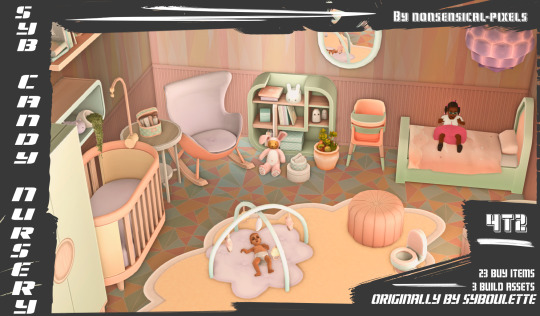
SYBOULETTE'S CANDY NURSERY CONVERTED TO THE SIMS 2 🍭
my previous conversions of syb's nursery sets can be found here: dreamy toddler 👶🏽| little dino 🐱🐉
hi everyone! @syboubou released their candy nursery set some time back in april to celebrate the release of ts4's growing together expansion pack, and i DESPERATELY wanted it for ts2! it's so, so adorable! so i did what i do, and almost two months later... here we are! i'm finally done converting the ENTIRE set! 🥳💃🏽
altogether there are 23 buy items, many of them functional, and 3 build assets: 2 wallpapers, 1 carpet floor. i'm immensely pleased with how it all turned out! it should pair well with my dreamy toddler conversions (linked above) and also my 4t2 conversion of madlen's kei baby care kit!
credits go to @syboubou for the amazing original set! it's simply perfection! 💝
there are two versions in the download below: a merged version, and an unmerged version. yes, the download is just THAT big. please pick only one! a collection file has also been prepared for convenience's sake.
DOWNLOAD: SFS | MF 🧁
keep reading below the cut to read what you need to read! and see what you need to see!
more previews


things to note
a readme.txt is also included in the download!
the changing table does not actually come with a bin. so unless you place the decorative trash bin next to it, your sims will be throwing their trash into the void.
the crib is unanimated. i tried my best but the mapping and the way the model was made simply would not accomodate any animations without looking even worse 😫
the dresser is just decor. i use the gussy up mod in my game so my sims rarely use wardrobes. plus, the original dresser's structure made it impossible to be animated 😅
the way that the playmat works in the previews above is actually as a rug. i made an invisible recolor of the sims 2 store playmat (included in the download) and layered it over the decorative one so that it's 'functional'! if you just want the playmat as a rug, you can delete this.
the toddler bed is cloned from @themediocresulk's toddler beds as pet beds so that it's less buggy and your toddlers can get in or out whenever you want them to! you may want to grab this mod so that they gain more motives.
items included
taken directly from that readme.txt.
buy mode:
Baby Shoes Box -> 318 polys, $49
Beehive Ceiling Lamp -> 900 polys, $99
Bookcase -> 489 polys, $249
Books -> 84 polys, $49
Cat Plushie -> 840 polys, $39
Changing Table -> 349 polys, $249
Cloud Rug -> 2 polys, $49
Crib -> 1788 polys, $399
Diapers Box -> 772 polys, $9
Dresser -> 76 polys, $699
Hanging Plant -> 506 polys, $19
High Chair -> 1048 polys, $249
Mirror -> 270 polys, $149
Ottoman -> 316 polys, $89
Playmat -> 1584 polys, $249
Potty -> 112 polys, $99
Rabbit Lamp -> 912 polys, $35
Rocking Egg Chair -> 1760 polys, $379
Shelves -> 168 polys, $89
Toddler Bed -> 1855 polys, $349
Toy Rattle -> 432 polys, $49
Trash Bin -> 222 polys, $39
Vanity Case -> 1436 polys, $29
build mode:
Floor Carpet -> 26 swatches, $1
Wallpaper Panelling Paint -> 56 swatches, $1
Wallpaper Panelling Pattern -> 32 swatches, $1
misc:
a recolor of the sims 2 store's baby dangle monster playmat is also included. if you want to use it, you'll need the original mesh from the store download.

phew, that was a LONG, but satisfying, post to write! i hope everyone enjoys these conversions as much as i do! i had a lot of fun making them 💝
have a lovely day simming everyone! don't be afraid to reach out to me if there's any issues with this download. though as always, keep in mind...

cheers ~ 🥂
685 notes
·
View notes
Text
beautiful & also terrible to have the sort of brain where you find yrself at 4:30 AM looking up intersections between jewishness & arthuriana. like. fucking amazing rabbit hole but. why am i not asleep. my head hurts and my eyes are sandy.
however. some cool things (that probably some of you knew abt already, but i did not!):
King Artus – "a 'Hebrew Arthurian Romance of 1279… Judaized and transformed.' […] Although the story in 'King Artus' is fairly straightforwardly Arthur’s as we know it today, there are little touches that tie it to Jewish literature. When, for example, Arthur’s mother, the Duchess, learns that her husband is dead and she has been deceived by the shape-shifting Uther Pendragon, she tries to figure out how that could be possible. 'No sooner had he gone more than a bow-shot’s distance away from the castle than the messenger came straight to my chamber.' That bow-shot’s distance comes not from Arthurian legend but from the story of Hagar, who sits a bow-shot’s distance away from her son Ishmael when Abraham casts them out and she does not want to see her son die."
Bovo-Bukh – "a chivalric romance adapted in 1507 by Elye Bokher (Elijah Baḥur *Levita) into 650 ottava rima stanzas in Yiddish from a Tuscan version (Buovo d'Antona) of the early 14th-century Anglo-Norman original, Boeuve de Haumton. This tale of the heroic adventures of the noble Bovo, exiled from his homeland by the machinations of his murderous mother, his wanderings through the world (as far as Babylon), and the love story of Bovo and Druzyana, their separation, his triumphant return home, and the final reunion with Druzyana and their two sons, proved to be one of the most beloved tales in the Yiddish literary tradition over the course of more than two centuries."
Vidvilt – "anonymous 15th–16th-century Yiddish epic. This Arthurian romance of the chivalric adventures of Sir Vidvilt (and his father Gawain), based on Wirnt von Gravenberg's 13th-century Middle High German Wigalois, proved to be one of the most enduringly popular secular narratives in Yiddish literary history, with numerous manuscript recensions, printings (the first in an extensively expanded version by Joseph b. Alexander Witzenhausen, Amsterdam 1671), and reprintings, in rhymed couplets, ottava rima (Prague 1671–79), and prose, over the course of three and a half centuries. The anonymous poet of the earliest Yiddish version composed more than 2,100 rhymed couplets (probably in northern Italy), following Wirnt's plot rather closely through the first three-quarters of the narrative (abbreviating much and generally eliminating specific Christian reference), before offering quite a different conclusion."
Sir Gabein – "from 1788-89, a tale in which the Arthurian knight Gabein does not return to Camelot but – via Russia and Sardinia – reaches China and ultimately ascends to the Chinese imperial throne as the new emperor." slow blink.
also this is getting beyond arthuriana into just epic poetry generally but. literally all of this sounds fascinating.
anyway. literary scholar manqué.e hrs as always here at k dot tumblr dot edu obviously! however. my ear is open like a greedy shark, &c.
#me like 'i know i didn't actually properly learn german despite taking literally years of it at c— but what if i learned yiddish'#this will not happen but. 🤔#that said: does seem like ppl have produced translations of most of this stuff altho like. i admit i DO hate reading in translation#…despite loving translation. this may sound nuts but like. i always want to be familiar with both ends of the process! /o\#ok no really the birds are chirping. enough. hit post.#bookblogging#(i guess)
108 notes
·
View notes
Photo

Traveling candlestick. 1788–89. Credit line: Bequest of Catherine D. Wentworth, 1948 https://www.metmuseum.org/art/collection/search/200170
#aesthetic#art#abstract art#art museum#art history#The Metropolitan Museum of Art#museum#museum photography#museum aesthetic#dark academia
8 notes
·
View notes
Text
The Bloody Journal - The Journal of a Levante Pirate
The Edinburgh Annual Register, for 1810 picks up a very curious case that leaves researchers in some doubt as to whether it is genuine or not.
It concerns William Davidson, a Scotsman who served under Captain Keates on HMS Niger in 1791. He is described as "a dark sallow man, aged about 35, of a gloomy and unsocial disposition". He had probably already been noticed several times for brawling and was probably punished again, whereby he collapsed under convulsions after 5 blows and the punishment was aborted. But when he hit a midshipman a few months later, the fun was over and he was supposed to be whipped again. Out of consideration for his last situation, they wanted to give him a different punishment, but he didn't get that far, because he broke away and threatened to kill himself if they didn't let him go. But he didn't, instead he jumped overboard, but was caught again and put in irons. In the meantime, rumour had it that Davidson was not a fine man, but had been involved in sinister dealings and had recorded all this in a secret journal.
You can read it here
The journal, also known as the Bloody Journal, was found and read in his Seachest. It described a voyage in 1788-89 on a Russian privateer named Saint Dinnan, who soon became guilty of piracy and was not very gentle with his Turkish and Greek victims, like, for example, the ship was simply sunk with all the remaining things and people (presumably most of the people were still alive). When asked about this, he admitted that he had written it, but that he had no choice and had to take part in order to survive. The journal was immediately sent to the Admiralty with this case of Piracy. But no answer came from the Admiralty and Davidson remained on board the Niger, which was now sailing under Captain Foote, until 1793. Still in Portsmouth, Davidson deserted 1794, but was pressed again and taken to the Royal George, where he drowned in an accident in 1795.
The question now occupying researchers is whether this journal is genuine or just an adventure/ pirate novel. The text itself is quite short, consisting of only 27 pages, and written quite incorrectly. Which is no wonder, because many of the simpler men could neither read nor write, so such a journal was already a rarity and makes it even more questionable. What is surprising is that the Admiralty, which had been presented with the case, did not react and presumably dismissed the whole thing as an adventure novel and did not put Davidson on trial as a pirate. The fact that he hid it does not, in my opinion, indicate that it is an authentic report, because even if it is a novel. He had to expect a conviction, because at that time anyone who gave even the slightest hint of piracy was given a trial. Which is why the A General History of the Pyrates: Pirate Captains, Crews, Ships, and Laws was written under a pseudonym, because it could have got the author into trouble.
But it is interesting that the journal was actually published in several copies before it was classified as too brutal. Whether you consider this an authentic report or not is up to you. But the whole thing is strange.
38 notes
·
View notes
Text
La Morte Di Cesare 1797 edition
A list of changes compared with 1791 edition (which I think is close to 1788 premiere, but I do not know what differences there are between them because I have not seen the earliest libretto). Scene numeration, when differs, is given in the format [1791 version]/[1797 version]. The 1797 edition is shorter and divided into two acts, as opposed to the original three.
General comparison by Martha Feldman:
"Many passages that had been done as simple recitative in Bianchi’s 1788–89 setting for the Teatro San Samuele in Venice were cut, raising the dramatic pitch, while added passages of broken obbligato recitative intensified the possibilities of psychological verisimilitude. By dwelling on Brutus’s vain attempts to dissuade Caesar from his tyrannical course, the 1797 version could enhance the effect of “realism” and prepare audiences for the shocking end of the opera, when Caesar would be murdered onstage (unlike the 1789 version or the revivals of 1790 and 1791 mounted in Livorno, Reggio, and Milan). The love talk originally given by Sertor to Calphurnia (Calfurnia) shortly before Caesar’s death was cut for Venice, in keeping with the more graphic ending, while interruptions to the narrative flow, such as Caesar’s three-stanza love aria to Calphurnia in the penultimate scene, were eliminated. Indeed, the ending did more than merely prepare the audience. It facilitated the intended identifi cation of the spectators with the political situation depicted by calling on a popular chorus as co-conspirators. Just before Brutus deals Caesar a mortal blow, the chorus intervenes to urge his death with shouts of liberty, and then cries out, “O morte, o libertà,” culminating in the requisite “Viva la libertà!”"
- Martha Feldman, Opera and Sovereignty
Personaggi.
Added characters: Tilio (Tillius Cimber) and Casca. However, they appear only in the last scene and have just one line (Tilio) if not zero (Casca).
Act 1.
Scene 1 - no changes. Cassius, Porcia, and Albinus as mean girls.
Scene 2 - cut some of the quarrel with Antony (including Porcia wishing that Caesar perish and Cassius seconding this).
Scene 3 - cut the gay praise of Brutus by Cassius. Fair, nothing to praise him for yet.
Scene 4 - cut Calpurnia's amorous arioso and changed her lines to more foreboding ones. Good for her.
Scene 5 - no changes.
Scene 6 - cut Porcia's dissimulating response to Caesar. This version's Porcia comes across as more straightforward in comparison: she does not even pretend civility towards Caesar. This comes at a price of her having less lines in general.
Scene 7 - about a page of dialogue cut, on Caesar's ambition, new war plans, and Parthians.
Scene 8 - replaced Porcia's aria with another one. Comparison.
Scene -/9 - a scene between Caesar and Calpurnia that does not exist in 1791 edition: Calpurnia asks Caesar to stay in Rome and do not leave for a new war, but to no avail.
Scene 9/10 - Caesar's lines about ungrateful Rome cut.
Scene 10/11 - no changes. Cassius yelling at Caesar in all his glory.
Scene 11/12 - Brutus' argument with Caesar shortened.
Scene 12/13 - no changes.
Act 2.
Scene 1 - Porcia's lines about the victims of civil war cut. Interesting in combination with Porcia's replaced aria in act 1 (the original aria was about avenging her father). Not sure how the topic of past victims connects with Venetian situation in summer 1797 and whether this cut is significant.
Scene 2 - no changes.
Scene 3 - dialogue between Cassius and Brutus cut (Cassius says that Caesar's "gifts" of praetorship have less than noble purpose, Brutus doubts it).
Scene 4 - no changes.
Scene 5 - some of Calpurnia's anxious lines cut. Her no less anxious arioso is replaced by the direct plea to Brutus to go and save Caesar (love the irony).
Scene -/6 - does not exist in 1791 version. Brutus, alone, sings an aria about his conflicted feelings (between the acting of a dreadful thing and the first motion... you know how it is).
Scene 6/7 - the temple scene. Interesting sestetto with chorus, featuring the cringefail crown offer by Antony (in both versions). Part of dialogue shortened. Antony's aside went to Albinus (perhaps the 1791 editoon assigned it to Antony mistakenly, not sure). Caesar's reproach to the Roman people got cut: "In voi, che schiavi / Di Mario e di Pompeo muti stareste / Dinanzi a loro, e che a insultarmi invita / La mia bontà, la resistenza giunge / Al disprezzo, all'oltraggio, e a tollerarne / Uso non sono". It is the third of Caesar's reproaches to the populace that got cut (see I.9 and I.11). I think critizising "the crowd" fell completely out of fashion in "revolutionary" Venice (1797).
Scene 7/8 - conspirators' dialogue significantly shortened (mostly Brutus' internal conflict), Brutus' aria cut. Scene II.6 of 1797 edition already covered this topic and gave Brutus a new aria.
Scene 8/- - does not exist in 1797 edition. The scene of Calpurnia sleeping while the ballet represents her prophetic dream (the statue of Pompey stabbing Caesar).
Scene 9 - Calpurnia relating her dream to Caesar cut entirely (meaning that in 1797 production we neither see nor hear Calpurnia's dream). Dialogue between Calpurnia and Caesar shortened, love duet replaced with Calpurnia's anxious aria.
In 1791 edition, Act 2 end here. In 1797, it continues up until the end.
Scene III.1/II.10 - Caesar deliberating whether to go to the senate. No changes.
Scene III.2/II.11 - Brutus confronts Caesar, great references to Catone in Utica. Shortened by four lines or so, but not much.
Scene III.3/II.12 - no changes.
Scene III.4/- - does not exist in 1797 version. Calpurnia reproaches Antony for letting Caesar go out alone, since she fears an attempt on his life (another passage about ungrateful Rome).
Scene III.5/II.13 - the oath of the conspirators outside the curia. No changes.
Scene III.6/II.14 - outside the curia, Caesar is presented with a letter about the conspiracy. Shortened by a few lines of Albinus.
Scene III.7/II.15 - much shortened in 1797 edition. Suspense! Ironically, as Caesar is about to read the letter, Calpurnia distracts him with her own warnings about bad omens, which leads to him entering the curia without having read it.
Scene III.8/- - does not exist in 1797 edition. Porcia, Calpurnia, and Antony wait on the stairs to the curia and hear Caesar being killed inside.
Scena ultima - this is where it gets fascinating, because they are two completely different scenes.
In 1791 edition, the opera ends with Antony and Caesar's Spanish guards calling for revenge against conspirators while Calpurnia is crying.
In 1797, the last scene is inside the curia. Brutus (not Cassius) invokes the unavenged ghosts of Cato and Pompey, who "even from the grave make the voices of liberty resound". Caesar straight up tells everyone gathered that liberty, both ideal and practical, is off the table. Having proclaimed this, he gets stabbed to death. The chorus sings a hymn to liberty. Sadly, the libretto does not have Porcia reappear for the finale (but I have a vision in my head so I choose to believe she is there).
1 note
·
View note
Text
Абсолютная монархия
Людовик XVI в священническом костюме с регалиями и крестом ордена Святого Духа работы Антуана-Франсуа Калле, 1781 год
Предреволюционный кризис
В 1787 году наблюдался недород шёлковых коконов. Это повлекло за собой сокращение лионского шёлкоткацкого производства. В конце 1788 года только в Лионе насчитывалось 20—25 тыс. безработных. От сильного града в июле 1788 года пострадал урожай зерновых во многих провинциях. Крайне суровая зима 1788/89 годов погубила многие виноградники и часть урожая. Цены на продовольствие поднялись. Снабжение рынков хлебом и другими продуктами резко ухудшилось. В довершение всего начался промышленный кризис, толчком к которому послужил англо-французский торговый договор 1786 года. По этому договору обе стороны значительно понизили таможенные пошлины. Договор оказался убийственным для французского производства, которое не могло выдержать конкуренции более дешёвых английских товаров, хлынувших во Францию[5][6]. Тысячи французских предприятий разорились. Резко выросла безработица.
Предреволюционный кризис ведёт своё начало от участия Франции в американской войне за независимость. Восстание английских колоний можно рассматривать как одну из непосредственных причин Французской революции, и потому, что идеи прав человека нашли сильный отклик во Франции и ��ходились с идеями Просвещения, и из-за того, что Людовик XVI получил свои финансы в очень плохом состоянии. Министр финансов Неккер финансировал войну с помощью займов, но с течением времени и это стало невозможным. После заключения мира в 1783 году дефицит королевской казны составлял более 20 процентов. В 1788 году расходы составляли 629 млн ливров, в то время как налоги приносили только 503 млн. Поднять традиционные налоги, которые в основном платили крестьяне, в условиях экономического спада 80-х было невозможно. Современники обвиняли двор в расточительности. Общественное мнение всех сословий единогласно считало, что утверждение налогов должно быть прерогативой Генеральных штатов и выборных представителей[7]. Шарль Александр де Калонн
Некоторое время преемник Неккера Калонн по-прежнему продолжал практику займов. Когда же источники займов начали иссякать, 20 августа 1786 года Калонн уведомил короля, что реформа финансов необходима[8]. Для покрытия дефицита (фр. Precis d'un plan d'amelioration des finances) предлагалось заменить двадцатину, которую платило фактически лишь третье сословие, новым поземельным налогом, который падал бы на все земли в королевстве, в том числе и на земли дворянства и духовенства. Для преодоления кризиса нужно было, чтобы налоги платили все[7]. Для оживления торговли предлагалось ввести свободу хлебной торговли и отменить внутренние таможенные пошлины. Калонн возвращался также к планам Тюрго и Неккера относительно местного самоуправления. Предлагалось создать окружные, провинциальные и общинные собрания, в которых участвовали бы все собственники с годовым доходом не менее 600 ливров[9].
Понимая, что подобная программа не найдёт поддержки со стороны парламентов, Калонн посоветовал королю созвать собрание нотаблей, из которых каждый персонально приглашался королём и на лояльность которых можно было рассчитывать. Таким образом правительство обращалось к аристократии — спасти финансы монархии и основы старого режима, спасти большинство своих привилегий, пожертвовав только частью[10]. Но в то же время это являлось первой уступкой абсолютизма: король советовался со своей аристократией, а не уведомлял её о своей воле[11].
Аристократическая фронда
Нотабли собрались в Версале 22 февраля 1787 года. Среди них были принцы крови, герцоги, маршалы, епископы и архиепископы, президенты парламентов, интенданты, депутаты провинциальных штатов, мэры главных городов — всего 144 персоны. Отражая преобладающее мнение привилегированных сословий, нотабли выразили своё возмущение предложениями реформы избрать провинциальные ассамблеи без сословного различия, а также нападками на права духовенства. Как и следовало ожидать, они осудили прямой поземельный налог и потребовали в первую очередь изучить доклад казначейства. Поражённые докладом о состоянии финансов, они объявили самого Калонна главным виновником дефицита. В результате Людовику XVI пришлось дать отставку Калонну 8 апреля 1787 года[12][13]. Ломени де Бриенн
Преемником Калонна по рекомендации королевы Марии-Антуанетты был назначен Ломени де Бриенн, которому нотабли предоставили заём в 67 млн ливров, что позволило заткнуть некоторые дыры в бюджете. Но утвердить поземельный налог, падавший на все сословия, нотабли отказались, сославшись на свою неправомочность. Это означало, что они отсылали короля к Генеральным штатам, не созывавшимся с 1614 года. Ломени де Бриенн был вынужден проводить политику, намеченную его предшественником. Один за другим появляются эдикты короля о свободе хлебной торговли, о замене дорожной барщины денежным налогом, о гербовом и иных сборах, о возвращени�� гражданских прав протестантам, о создании провинциальных собраний, в которых третье сословие имело представительство, равное представительству двух привилегированных сословий, вместе взятых, наконец, о поземельном налоге, падающем на все сословия. Но Парижский и иные парламенты отказываются регистрировать эти эдикты. 6 августа 1787 года устраивается заседание с присутствием короля (фр. Lit de justice), и спорные эдикты вносятся в книги Парижского парламента. Но на другой день парламент отменяет как незаконные постановления, принятые накануне по приказу короля. Король высылает Парижский парламент в Труа, но это вызывает такую бурю протестов, что Людовик XVI вскоре амнистирует непокорный парламент, который теперь также требует созыва Генеральных штатов[14].
Движение за восстановление прав парламентов, начатое судейской аристократией, всё более перерастало в движение за созыв Генеральных штатов. Привилегированные сословия заботились теперь лишь о том, чтобы Генеральные штаты были созваны в старых формах, и третье сословие получило лишь одну треть мест и чтобы голосование производилось посословно. Это давало большинство привилегированным сословиям в Генеральных штатах и право диктовать свою политическую волю королю на руинах абсолютизма. Многие историки называют этот период «аристократической революцией», и конфликт аристократии с монархией с появлением на сцене третьего сословия становится общенациональным[15].
1 note
·
View note
Text
Five steps of Wikipedia for Tuesday, 6th February 2024
Welcome, добре дошли (dobre doshli), welkom, nuqneH 🤗
Five steps of Wikipedia from "Shirley H. Scheibla" to "1788–89 United States presidential election". 🪜👣

Start page 👣🏁: Shirley H. Scheibla
"Shirley Scheibla was a journalist for The Wall Street Journal from 1943 to 1948 and for Barron's from 1962 until her retirement in 1992. ..."
Step 1️⃣ 👣: Washington, D.C.
"Washington, D.C., formally the District of Columbia and commonly called Washington or D.C., is the capital city and the federal district of the United States. The city is located on the east bank of the Potomac River, which forms its southwestern border with Virginia and borders Maryland to its..."

Image licensed under CC BY-SA 2.0? by Ted Eytan
Step 2️⃣ 👣: 1793 State of the Union Address
"The 1793 State of the Union Address was given by George Washington, the first president of the United States. It was given in Philadelphia, Pennsylvania at Congress Hall. Washington stood before the 3rd United States Congress on Tuesday, December 3, 1793, and said, "While on the one hand it awakened..."
Step 3️⃣ 👣: 1796 State of the Union Address
"The 1796 State of the Union Address was given by George Washington, the first president of the United States, on Wednesday, December 7, 1796. It was given in Congress Hall, Philadelphia. He gave it directly to Congress. He began with, "In recurring to the internal situation of our country since I..."
Step 4️⃣ 👣: 1800 State of the Union Address
"The 1800 State of the Union Address was given by John Adams, the second president of the United States, on Tuesday, November 11, 1800, to a joint session of the 6th United States Congress. It was the first State of the Union Address delivered at the new United States Capitol in Washington,..."
Step 5️⃣ 👣: 1788–89 United States presidential election
"The 1788–89 United States presidential election was the first quadrennial presidential election. It was held from Monday, December 15, 1788, to Wednesday, January 7, 1789, under the new Constitution ratified that same year. George Washington was unanimously elected for the first of his two terms as..."
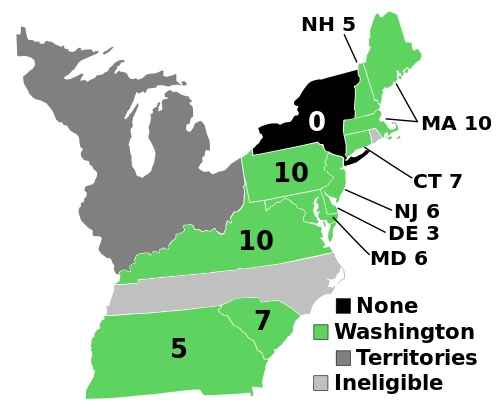
Image by AndyHogan14
0 notes
Text
¿Sabías quién fue el prior 89 de ValldeCrist?
¿Sabías que…? entre 1771 y 1788, el prior número 89 de la Real Cartuja de ValldeCrist fue Dom Francisco Zaragozi.
A pesar de que en las infografías lo figuro con “Don” en Español, sería más correcto hacerlo en Latín: “Dom”. Adecuándose así al contexto.
El número, nombre y fechas, además de otros elementos, los incluí el 24 de septiembre de 2013, en la enciclopedia abierta digital: wikipedia;…
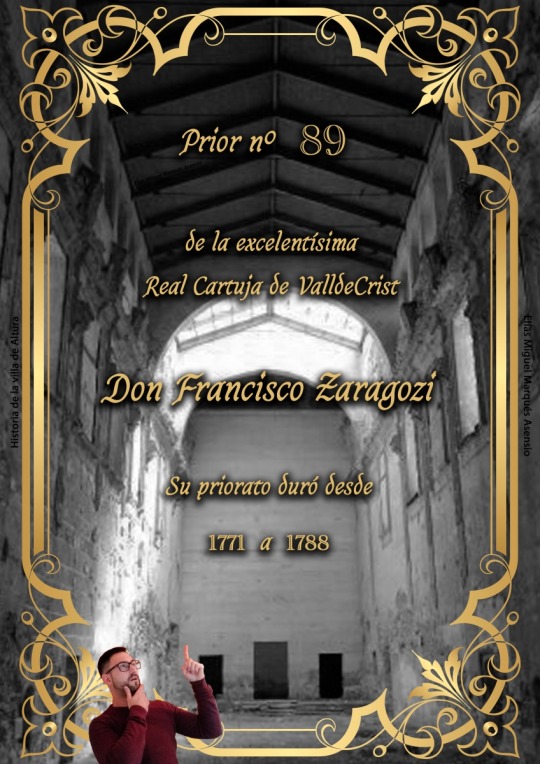
View On WordPress
0 notes
Text

0 notes
Photo
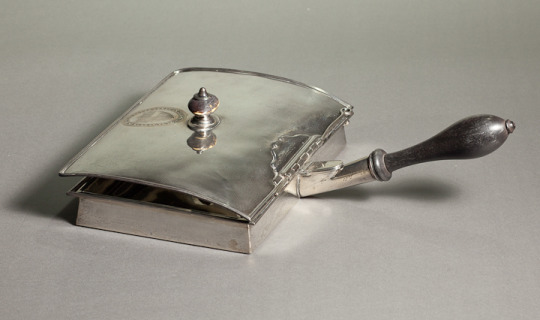
Silver warming dish, 1788-89, England.
48 notes
·
View notes
Photo
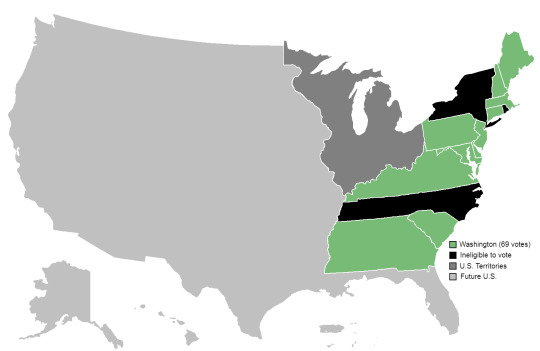
How the 1788-89 US election went.
The 1788–1789 United States presidential election was the first quadrennial presidential election. It was held from Monday, December 15, 1788 to Saturday, January 10, 1789, under the new Constitution ratified in 1788. George Washington was unanimously elected for the first of his two terms as president, and John Adams became the first vice president. This was the only U.S. presidential election that spanned two calendar years (1788 and 1789).
162 notes
·
View notes
Photo

Mrs Robert Trotter of Bath, George Romney, 1788-89
#mrs robert trotter of bath#george romney#romney#painting#portrait#art#1788#1789#1780s#1700s#18th century
71 notes
·
View notes
Photo
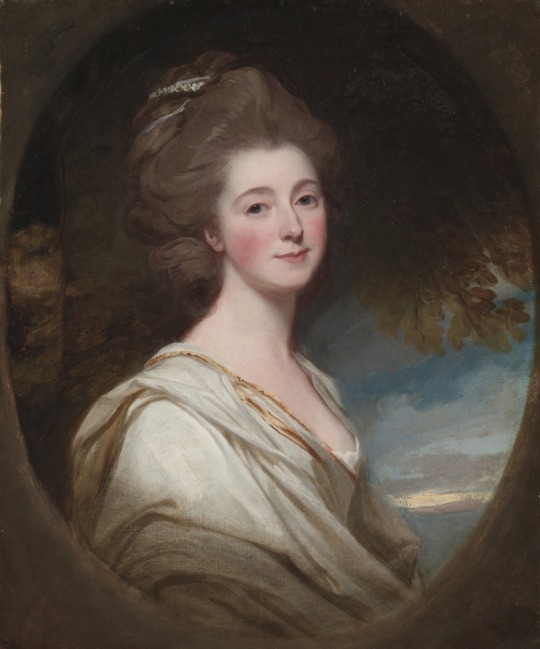
Portrait of Jane Hoskyns, George Romney , c. 1778-1780, Cleveland Museum of Art: European Painting and Sculpture
The sitter married Sir John Read in 1774, who also sat for a portrait by the artist in 1788. Born in Lancashire, Romney first apprenticed in his father’s cabinetmaker’s shop. He worked in the north of England until 1762, when he settled in London. There he became a successful portraitist, alongside Joshua Reynolds and Thomas Gainsborough. As with many successful portraitists, his heart lay elsewhere and he dreamed of making history paintings, but his plans for grandiose compositions rarely advanced beyond drawings.
Size: Framed: 102 x 89 x 10.5 cm (40 3/16 x 35 1/16 x 4 1/8 in.); Unframed: 69.8 x 59 cm (27 1/2 x 23 1/4 in.)
Medium: oil on canvas
https://clevelandart.org/art/1916.1041
16 notes
·
View notes
Text
Pas de pain—à la lettre.
Reading about economic stuff casting light on Valjean’s early life. Valjean was arrested in 1795; here’s some context about bread expenses in the dramatic years leading up to that. This info comes from ch. 2 of Aftalion, The French Revolution: An Economic Interpretation (originally, L’Economie de la Révolution Française). Aftalion feels that a lack of market intervention would have best served the nation, a thesis I’m unconvinced and at times deeply unimpressed by*—but the data’s useful, so, without further ado…
Household of a Parisian worker ca. 1789.
• Daily income examples: laborer, 20-30 sous; journeyman mason, 40 sous; joiner or locksmith, 50 sous.
• Average food budget: about half the income buys bread; about a sixth buys the rest of the diet (vegetables, fats, wine).
• A family with 2 children needs about 8 pounds of bread per day.
• The price of a 4-pound loaf of bread might rise from 8-9 sous to 12 or even 20 sous. [Unclear if this last number represents the ’89 peak.]
Life cycle of the grain price.
Grain prices fluctuate dramatically in the last decades of the ancien régime. The price range of grain from a certain harvest is determined by how plentiful that harvest is. The price is at the low end of that range just after the harvest, August-September, and rises as the grain of that harvest is consumed. In the scarcity period, May-July, the grain price may be double the average price for that harvest. Small cultivators must sell all their grain early, during low prices, because they need money immediately and/or lack storage space. Also, withholding grain from the market to await higher prices was condemned as “hoarding” and restricted by regulation—and this would aggravate the price swings, as you can’t take grain off the market to lift a low price, and you haven’t got any left to put on the market and lower a high price.
The 1788 harvest.
The harvest of 1788 was damaged by a heat wave and stormy weather (including a hailstorm in July). Necker, the king’s economy guy, ordered 45m pounds of grain from abroad; but this caused panic, and stockpiling aggravated the shortage. (Aftalion has looked into the grain prices and considers their height not totally justified by the harvest damage itself.) Bread and corn prices reached an all-time peak in ’89, causing riots along the way. Meanwhile, unemployment had increased, apparently due to a 1786 Anglo-French trade treaty that exposed relatively undeveloped French industry to English competition.**
* I was especially miffed by Aftalion’s remarks in this chapter about the destitute being unable to comprehend that uncapped scarcity prices would’ve helped them in the long run: there is no long run for people who are daily fighting off death with a stick.
** Occasions for more unimpressive logic from Aftalion: although the weather alone and weather-plus-panic “seem equally plausible” explanations for the ’89 shortage, Necker’s heinous market-meddling was totally the key that “determined the course of the revolution;” and yes okay free trade was hurting French manufactures but the treaty would totally have improved the French economy after the French inevitably caught up, which “it is possible that” they were in the process of doing; and, this obvious friction period in the manufacturing sector is no reason to think that there would be a similarly deadly friction period for the above-mentioned poor and their bread prices. QED.
#my reading#textual reference#valjean x story#agriculture#economy#france x ancien regime#france x revolution
18 notes
·
View notes
Text
Five steps of Wikipedia for Sunday, 23rd July 2023
Welcome, Bienvenue, Välkommen, Selam 🤗
Five steps of Wikipedia from "Frédérique Charlaix" to "1788–89 United States presidential election". 🪜👣

Start page 👣🏁: Frédérique Charlaix
"Marguerite Frédérique Charlaix (1883-1939) was a French painter from the École de Lyon who specialised in landscapes and still lifes. She was the daughter of painter Léon Charlaix. Charlaix moved to Lyon in 1900 to study with Jean-Louis Loubet (1841-1903), the painter, enamelist and sculptor Robert..."
Step 1️⃣ 👣: Société des Artistes Indépendants
"The Société des Artistes Indépendants (Society of Independent Artists) or Salon des Indépendants was formed in Paris on 29 July 1884. The association began with the organization of massive exhibitions in Paris, choosing the slogan "sans jury ni récompense" ("without jury nor reward"). Albert..."
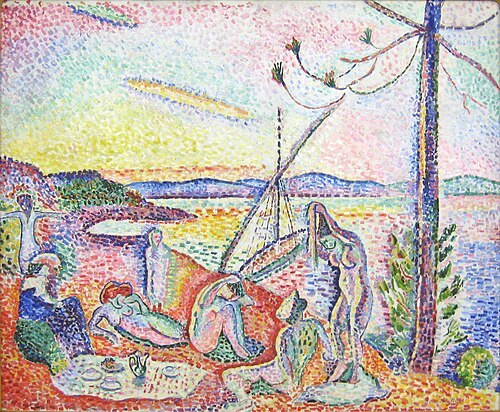
Image licensed under PD-US? by
Henri Matisse
Step 2️⃣ 👣: 4′33″
"4′33″ (pronounced "four minutes, thirty-three seconds" or just "four thirty-three") is a three-movement composition by American experimental composer John Cage. It was composed in 1952, for any instrument or combination of instruments, and the score instructs performers not to play their instruments..."
Step 3️⃣ 👣: Aaron Copland
"Aaron Copland (, KOHP-lənd; November 14, 1900 – December 2, 1990) was an American composer, composition teacher, writer, and later a conductor of his own and other American music. Copland was referred to by his peers and critics as the "Dean of American Composers". The open, slowly changing..."

Image by CBS Television
Step 4️⃣ 👣: 1936 United States presidential election
"The 1936 United States presidential election was the 38th quadrennial presidential election, held on Tuesday, November 3, 1936. In the midst of the Great Depression, incumbent Democratic President Franklin D. Roosevelt defeated Republican Governor Alf Landon of Kansas. Roosevelt won the highest..."

Image by
Unknown authorUnknown author or not provided
Step 5️⃣ 👣: 1788–89 United States presidential election
"The 1788–89 United States presidential election was the first quadrennial presidential election. It was held from Monday, December 15, 1788, to Saturday, January 10, 1789, under the new Constitution ratified that same year. George Washington was unanimously elected for the first of his two terms as..."
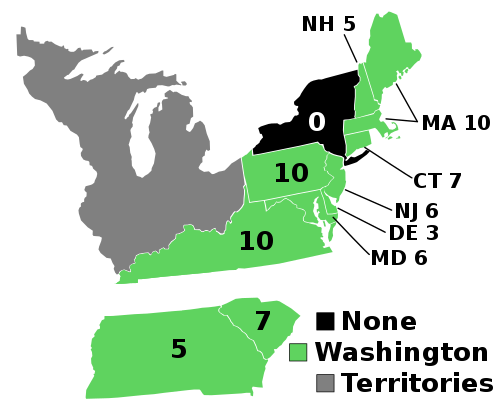
Image by AndyHogan14
0 notes